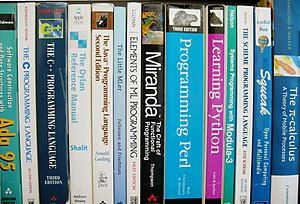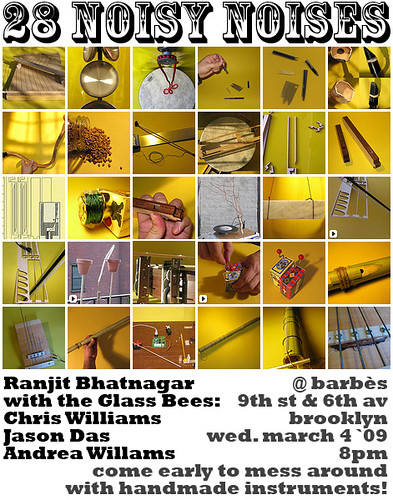
Making (Weird) Music -- Homemade Musical Instruments
One of the wonderful things about the Internet is stumbling upon areas of creativity you didn’t even know existed. I was looking for some musical crafts for kids (more on that later) when I discovered a whole world of hobbyists and artists who invent amazing musical instruments. Of course, homemade instruments are as old as the hollow reed, the washtub bass, and the one-man band. But these folks have taken recycled art to a whole new level.
Consider balloon player Judy Dunaway. Since 1990, Dunaway, who has a Ph.D. in music composition, has written over forty works for what most of us consider a party toy. Some links to audio samples (you may want to preview first) show how much more you can do with this “instrument” than mere squeaks. And if you caught the exhibit of Ken Butler’s “hybrid instruments” a few years ago at MASS MoCA in North Adams, MA (many of which can be glimpsed on his website), you know what results when you cross a telephone and a violin, or a checkerboard and a guitar. Perhaps the best-known instrument-inventors around are the members of the Blue Man Group. Their website includes details about such PVC-pipe creations as the “drumbone.” Then there’s Benjamin Franklin – statesmen, author, scientist, musical innovator. After hearing a concert played on wine glasses, Franklin came up with the “armonica,” a series of spinning glass bowls that allow the performer to create eerie chords. Dr. Mesmer used the armonica to induce hypnosis, and in the 1800s it was said to drive some listeners insane. Learn all about the armonica, try a virtual version, and listen to its sound, if you dare, at The Franklin Institute’s website.
If you’re looking for more, the website Oddmusic lives up to its name with a gallery of “unique, unusual, ethnic, or experimental” instruments, from the Stalacpipe Organ, to the Stroviols Ukulele, which looks like it’s got a tuba grafted onto it, to the Serpentine Bassoon, an electronic instrument made of red leather that resembles a Chinese dragon and sounds like an out-of-tune orchestra. One of my family’s favorite weird instruments, an early electronic device called the Theremin (think of the Beach Boys’ “Good Vibrations” or the soundtrack of the sci-fi classic, “Forbidden Planet”), has its own mini-section here. Another site, Experimental Musical Instruments, features on its gallery includes such wonders as the Video Octavox, an eight-armed device which sits on, and interacts with, a TV. (I couldn’t get the audio clips to play, but the images alone are worth a visit.)
Ready to build some instruments of your own? The kids’ section of the Dallas Symphony Orchestra website has make-at-home projects like a soda bottle Buzzing “Brass” Mouthpiece that demonstrate how the different members of the orchestra work. It’s a lively site with lots of pictures and audio samples of instruments, information on music theory and even games about composers, so be sure to look around while you’re there.
Then there’s John Bertles’s New York City-based group Bash the Trash, which teaches kids to make their own instruments from junk. Instructions are provided for both simple (shaker, horn, rubber-band guitar) and more complex (styrocello, thumb piano) instruments. More Bertles projects can also be found at the Instrument Lab section of the New York Philharmonic’s website for kids. Mudcat, a site about folk music and blues, has directions for a variety of blowers, including the garden hose trumpet and the drinking straw oboe, gourd rattles, drums, banjos and more. And Crafty Music Teacher has tips for building a PVC-pipe bass marimba for only $350 (hey, a real one costs 40 grand!), as well as ideas for house-key chimes, mallets made from superballs and car bushings, and other handy items.
If you’re a kid with a unique homemade instrument you want the world to see, you’re in luck. Teacher Elizabeth Rexford’s Virtual Museum of Music Inventions is a showcase for students who design, build, and write descriptions of their own instruments. There are stills and video clips of entries from past years, information for teachers, and helpful links. As Rexford says, using recycled material to create a new instrument is not just an art: it takes science and math to get it to sound just right. But most importantly, it’s fun -- and that’s music to any kid’s ears.


![Reblog this post [with Zemanta]](http://img.zemanta.com/reblog_e.png?x-id=ddc640b5-3b5b-401d-9bfb-5eda3a573be0)




![Reblog this post [with Zemanta]](http://img.zemanta.com/reblog_e.png?x-id=cdacf0ff-56cb-4c79-af7a-71d8828ec5c9)


